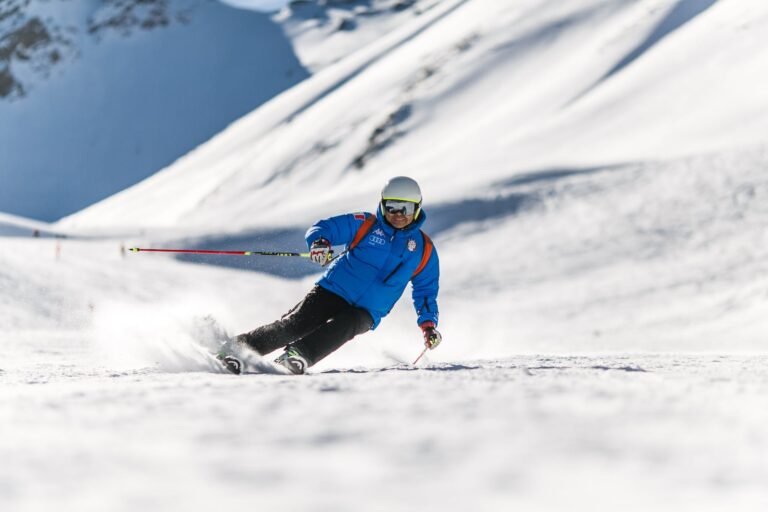Ski Boot Size Chart and Fitting: A Comprehensive Guide
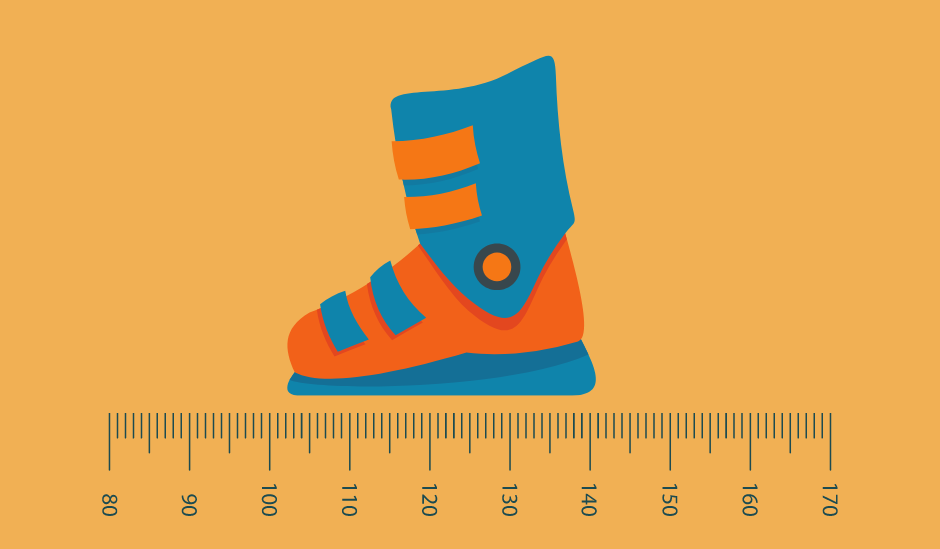
Hey there, snow chasers! One of the secrets to a great day on the slopes is wearing well-fitted ski boots. You wouldn’t believe the number of times I’ve seen folks struggling down a hill, not because they can’t ski, but because their boots don’t fit right. Talk about a day-ruiner, right?
So, what’s the trick to getting the right fit? It’s all about knowing the ski boot size chart. Now, I know it might sound as exciting as watching snow melt, but trust me, this little chart is a game-changer. It’s the key to turning uncomfortable, “why did I even bother” kind of ski days into “I can’t wait to do this again” experiences.
But don’t worry, there’s no math homework required here. We’ll break it all down in this guide and show you exactly how to navigate that chart like a pro. So, whether you’re buying your first pair of ski boots or your fiftieth, you’re in the right place. Let’s get you geared up for your best ski season yet, starting from the ground up – with the perfect pair of boots.
Key Takeaways
- Mondopoint Sizing: Your ski boot size is based on the length of your foot in centimeters, known as Mondopoint sizing, ensuring a more precise fit than standard shoe sizes.
- Comfort vs. Performance Fit: Choose a comfort fit for a more forgiving boot if you’re a beginner or prefer easy-going skiing, and a performance fit for a tighter, more responsive boot if you’re an advanced skier.
- Measuring at Home: You can measure your foot length and width at home with a piece of paper, a pen, and a ruler, then match these measurements to the Mondopoint size chart.
- Children’s Boots: For kids, avoid the temptation to size up too much. Adjustable ski boots are great for growing feet, and seasonal rentals can be a wallet-friendly option.
- Boot Width (Last): The width of your ski boot, or the last, significantly affects both comfort and performance. Choose the right width for your foot shape to avoid discomfort or loss of control.
- Custom Fitting: For the best possible fit, consider custom boot fitting services from a professional, which will tailor the boot to your foot’s unique shape and needs.
Ski Boot Size Chart
| Mondo Point Size (cm) | US Men’s Size | US Women’s Size | UK Size | EU Size |
|---|---|---|---|---|
| 22.5 | 4.5 | 5.5 | 4 | 36 |
| 23.0 | 5.0 | 6.0 | 4.5 | 37 |
| 23.5 | 5.5 | 6.5 | 5 | 37.5 |
| 24.0 | 6.0 | 7.0 | 5.5 | 38 |
| 24.5 | 6.5 | 7.5 | 6 | 39 |
| 25.0 | 7.0 | 8.0 | 6.5 | 40 |
| 25.5 | 7.5 | 8.5 | 7 | 40.5 |
| 26.0 | 8.0 | 9.0 | 7.5 | 41 |
| 26.5 | 8.5 | 9.5 | 8 | 42 |
| 27.0 | 9.0 | 10.0 | 8.5 | 42.5 |
| 27.5 | 9.5 | 10.5 | 9 | 43 |
| 28.0 | 10.0 | 11.0 | 9.5 | 44 |
| 28.5 | 10.5 | 11.5 | 10 | 44.5 |
| 29.0 | 11.0 | 12.0 | 10.5 | 45 |
| 29.5 | 11.5 | 12.5 | 11 | 45.5 |
| 30.0 | 12.0 | 13.0 | 11.5 | 46 |
| 30.5 | 12.5 | 13.5 | 12 | 47 |
| 31.0 | 13.0 | 14.0 | 12.5 | 47.5 |
How To Measure Ski Boot Size
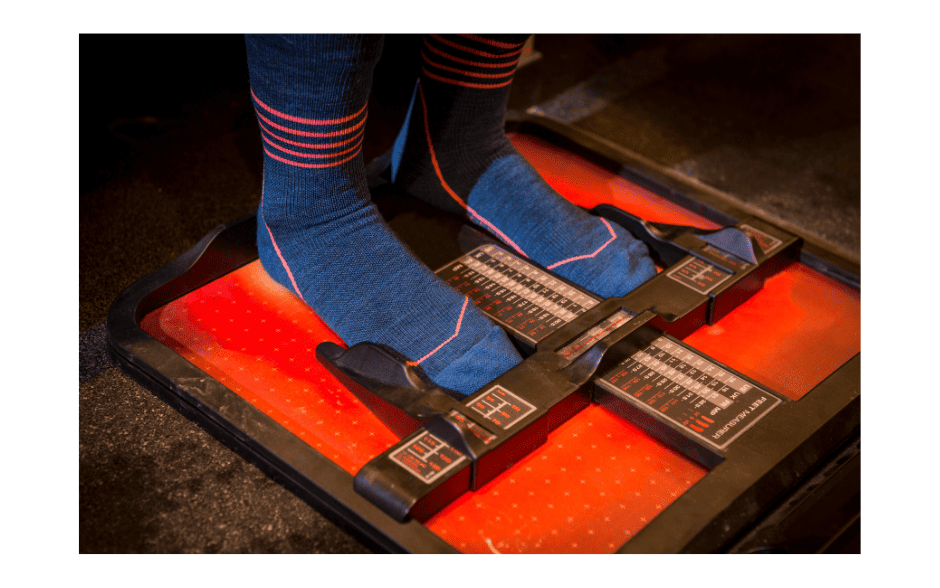
Measuring your feet for ski boots isn’t rocket science, but getting it right can mean the difference between a ‘meh’ day and a legendary one on the slopes. So, here’s how to turn your living room into a ski boot-fitting studio:
- Gear Up: Grab a piece of paper, a pen, and a ruler or a tape measure – make sure it has centimeters because Mondopoint is all about those metrics.
- The Set-Up: Place the paper on a hard floor against a wall. Slip on the ski socks you’d wear on the slopes.
- Trace Your Footprint:
- Stand on the paper with your heel lightly touching the wall and your longest toe pointing straight ahead.
- Keep your weight distributed as if you were standing on skis (imagination required).
- Trace around your foot. It’s like drawing your own personal outline for an action movie but for skiing.
- Measure Up:
- With your foot outline done, draw a straight line at the tip of your longest toe and another at the back of your heel.
- Measure the distance between these two lines in centimeters. That’s your foot length, and it’s your ticket to a mondo size that fits.
- Width Wise:
- Now, for the width, measure the broadest part of your foot outline. This bit’s crucial for nailing that comfy fit versus the “my toes can’t breathe” kind of day.
- Double Check:
- Repeat with your other foot. Sometimes, they like to be different sizes because, well, feet.
- Use the larger of the two measurements when picking out your boots because squished toes on a ski day? Hard pass.
Understanding Ski Boot Sizing
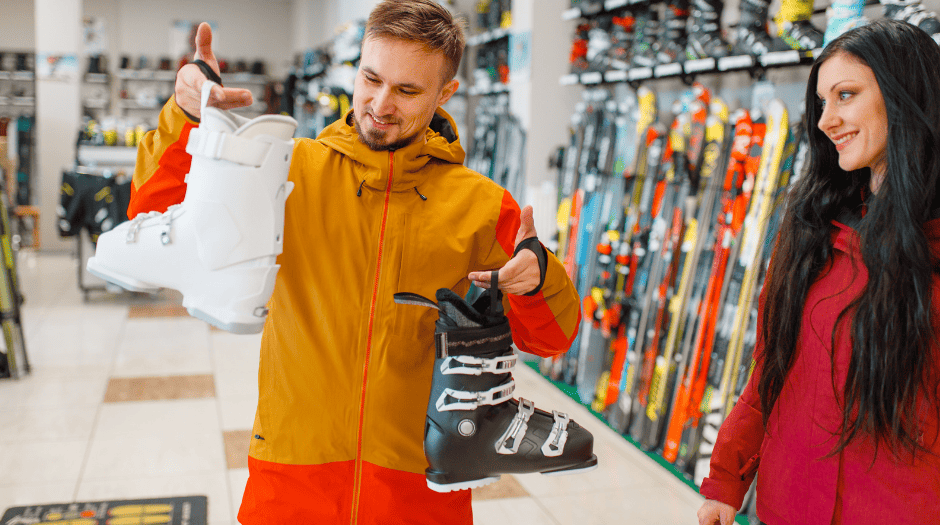
Let’s talk ski boot sizes – and yep, it’s a bit more complicated than just knowing your shoe size. Enter Mondopoint: the system that ski boot sizing swears by. It’s all about the length of your foot in centimeters, not just size numbers. That makes sense, right? Because when you’re swooshing down those slopes, you want a boot that fits like it was made just for you.
To break it down, ski boots come in two main fits: comfort and performance. Comfort fit is your laid-back, roomy kind of feel – great for those leisurely days on well-trodden paths or when you’re still getting the hang of things. Performance fit? That’s like a firm handshake with your foot. It’s snug, precise, and all about control, especially when you’re upping your game to more challenging runs.
This sizing doesn’t just help you find boots that fit; it ensures they complement your skiing style. I want to emphasize the importance of understanding Mondopoint sizing because it’s the foundation for all the fun and success you’ll have on the slopes.
The Importance of Ski Boot Sizing
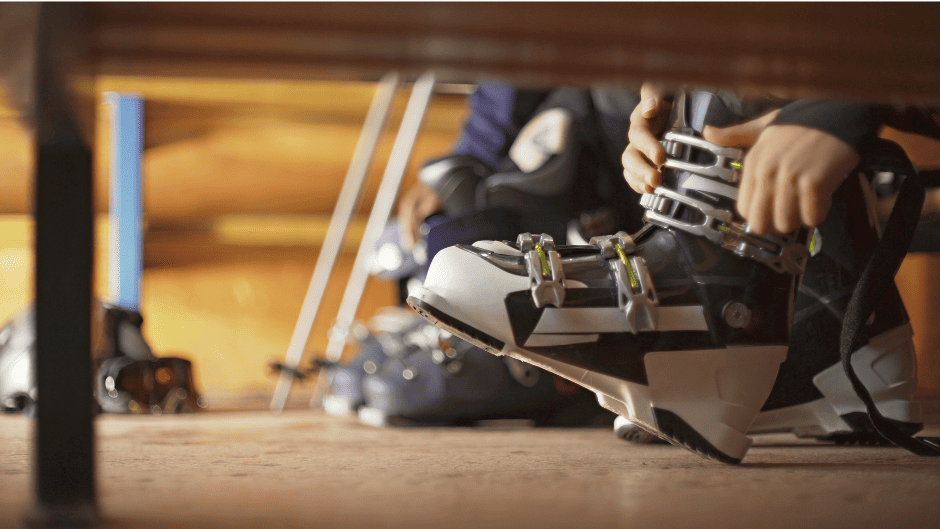
Alright, let’s dive in a little deeper, shall we? First things first, we need to chat about why ski boot sizing is such a big deal. You might be thinking, “They’re just boots, right?” But, oh boy, let me tell you, they are so much more than just boots.
You see, your ski boots are like your car’s steering wheel. Imagine if that steering wheel was too big or too small. You’d struggle to keep your car on the road, wouldn’t you? Well, that’s exactly what happens on the slopes when your boots are too loose or too tight. They’re your direct line of communication to your skis, and if they’re not fitting properly, your ‘communication’ (read: control) will be, let’s just say, a tad off. And by ‘a tad,’ I mean you might find yourself unintentionally off-piste and waist-deep in a snowdrift. Not fun, trust me.
But it’s not just about control; it’s about comfort too. Ski boots that are too small can leave you with pinched toes and a day of discomfort. Boots that are too big? You’ll be sliding around like a pair of socks on a polished floor. And let’s not even talk about the blisters. Ouch.
So, here’s the bottom line: your ski boots need to fit you like Cinderella’s glass slipper – just right. And that, my friends, is where our trusty ski boot size chart comes into play. It’s the roadmap to your perfect fit.
Now that we’ve got our ‘why’ sorted, let’s get to the ‘how’. The ski boot size chart might look like a cryptic crossword at first glance, but once you break it down, it’s really pretty simple. You know how when you buy regular shoes, you look at your US or EU size? Well, in the ski world, we have something called mondo point sizing. It’s like the universal language of ski boot sizes, and it’s measured in centimeters. No fuss, no confusion – every ski boot size in the world uses the same scale.
So how do you find your mondo size? All you need is to measure the length of your foot in centimeters, and voila, that’s your ski boot size. For a more detailed understanding, check out this guide on the Mondo Point system.
Ski boot sizes don’t correspond directly to shoe sizes. In fact, your ski boot size will often be smaller. It might feel a little tight at first, but remember, you’re going for a snug, secure fit, not a loose, roomy one.
Within these sizes, you’ll also see boots classified as ‘performance’, ‘recreational’, or ‘comfort’ fits. Performance boots are tight and precise for experienced skiers who want maximum control. Recreational fits offer a balance between comfort and control, while comfort fits are roomier and perfect for casual skiers who value comfort over precision.
Remember, a ski boot size chart is not just about your foot’s length. It’s also about the width and overall shape of your foot. Some brands cater to narrower feet, while others are better suited to wider feet. This is why it’s important to try on several pairs to see what works best for you.
What is ski boot width (Last)?
Now, let’s chat about a part of ski boot fitting that’s often overlooked but is a total game-changer: the boot width, or what we in the ski world call the “last.” The last is essentially the width of the inside of your ski boot at the ball of your foot, and it’s a major player in the comfort and performance league.
Picture this: you’ve got the length of your boot down pat, but something still feels off when you hit the slopes. It could be too snug or maybe too roomy on the sides. That’s the last at work. A last that’s too narrow can make your ski day feel like a foot-squeezing nightmare. Too wide, and your foot is sliding around, leaving you in a tussle for control.
Here’s how you find your Goldilocks fit for the last:
- Narrow Feet: If you’ve got slender feet, look for a last measurement that’s on the snugger side. You’re aiming for a glove-like fit that delivers sharp, responsive movements.
- Average Feet: Most skiers will fall into this category, and you’ll find that a medium width last gives you that just-right feel without any pinching or sliding.
- Wide Feet: For those with wider feet, a broader last is the way to go. It gives your feet enough room to breathe without compromising on stability.
When choosing the right last, consider how you ski. Are you after precision and power in every turn? A narrower last will transmit your moves to the skis with sniper accuracy. More about cruising and comfort? A wider last will let you relax and enjoy the ride without any pinching.
In the end, matching the last to your foot shape is essential for that perfect blend of comfort and performance. It’s worth taking the time to get it right because when your boots fit like they’re a part of you, skiing becomes less about fiddling with your gear and more about the pure joy of the sport.
Best Ski Boot Fitting Tips
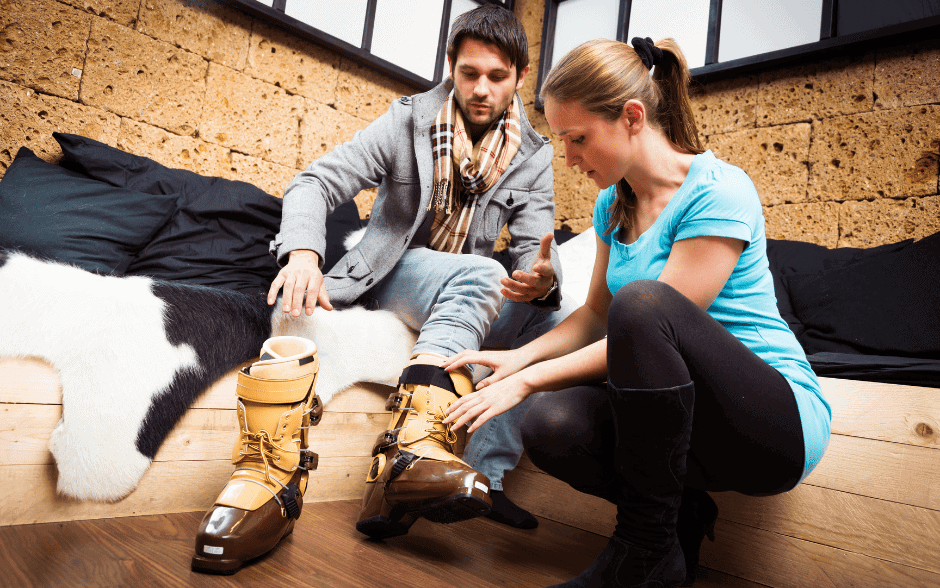
So, now that we’ve deciphered the mysterious ski boot size chart, let’s talk about how to use it when you’re trying on boots. I mean, there’s a difference between knowing your size and actually finding a pair of boots that fits like a dream.
First up, remember: it’s not just about length; it’s also about the width of your foot. Some folks have narrow feet, while others have feet as wide as a snowboard (okay, maybe not that wide, but you get the picture). Boot manufacturers understand this, so you’ll find different models designed to accommodate different foot shapes. So, once you’ve got your mondo size, you also want to consider the width of the boot. If it feels too tight or too loose around your foot, it might not be the right model for you.
Next, keep in mind that your ski boots shouldn’t feel like your favorite pair of slippers. It’s going to be a snug fit. So snug, in fact, that when you first put them on, you might think, “Oh, these are too small.” But, give it a minute. Buckle them up, stand in your ski stance, and then see how they feel. Your toes should just brush the front of the boot. If they’re curling up like a toboggan ride gone wrong, then yes, they’re too small. But if your toes can stretch out when you lean forward – almost like you’re reaching for your ski poles– that’s the sweet spot.
Also, don’t forget about your socks. You won’t be skiing in your regular gym socks (at least, I hope not), so make sure to try your boots on with a proper pair of ski socks. They’re thinner than you might expect, so they can affect the fit.
And one last thing: take your time. Don’t rush the process. Try on different pairs, walk around, flex in them, and do a little jig if you want to. The more time you spend in them in the store, the less time you’ll spend on the slopes wondering why you didn’t opt for a size bigger or smaller.
So, there you have it – the lowdown on how to make the ski boot size chart work for you. Because the only thing better than a fresh powder day with your perfect pair of powder skis is enjoying it with happy, comfortable feet.
Considerations for Children’s Ski Boot Sizing
Children’s ski boot sizing can be a whole new can of worms, but don’t worry, the ski boot size chart has got us covered here too.
The challenge is real: buy boots that fit now, and they might be too small in a month; buy them too big, and your little skier is sliding around, struggling to control their skis. Just as we do for adults, we measure the child’s foot for that just-right mondo size—a fit that’s snug but not constrictive, allowing their toes to gently graze the boot’s end when standing and have space to move when they’re in their ski stance.
Understanding the growth spurt conundrum, the brilliance of adjustable ski boots really stands out. Take, for instance, the IDEA FREE 22.5-25.5 by Roces, which brilliantly adjusts across a span of six sizes. It’s tailored for the older kids’ bracket, specifically those over 10, with its European size stretching from 35.5 to a full 40. This boot adapts as those young feet grow, making it a savvy choice for parents and a comfy one for the kids.
For beginners who are more about snow plows than sharp turns, sizing up slightly can work without much downside. But for those young rippers cutting through the snow, a tighter fit ensures the precision they need to ski safely and improve.
And for those of us watching our wallets as closely as we watch our kids ski, the industry has adapted. Many ski shops now offer seasonal rentals or trade-in programs, a strategy that ensures kids have boots that fit well for their entire season on the slopes. This way, you’re securing comfort, safety, and performance for your young skiers without the worry of what to do when their feet inevitably take the next leap in size.
So, don’t forget about the little ones!
Custom Boot Fitting Services
Custom boot fitting is where you get ski boots tailored just for your feet, and it’s a total game-changer. A professional boot fitter will measure your feet and consider your skiing style to give you the perfect fit.
To find a pro, hit up your local ski shop like Evo. They’ll have experts who can tweak and mold your boots for the ultimate in comfort and control. Check out their eVofit program to learn more about it.
Custom fitting is like having a suit tailor-made for your ski adventures. It’s a step you won’t regret because nothing beats boots that fit like a dream.
FAQ
Can I use my regular shoe size for my ski boot size?
Well, not exactly. Ski boot sizing uses the Mondo Point system, which is based on the length of your foot in centimeters. It’s a more precise measurement than your typical shoe size, especially if you’re a beginner. In fact, if you’re just starting out, there are specially designed skis for beginners that can help make the learning process smooth.
My ski boots hurt. Does that mean they’re too small?
Not necessarily. Ski boots are meant to fit snugly. It’s normal for them to feel tight, especially if you’re used to roomy footwear. But of course, they shouldn’t be causing you pain. If they are, it’s worth checking to see if they’re the right size and fit.
My toes touch the front of the boot. Is that okay?
Yep, it’s perfectly fine. Your toes should lightly touch the end of the boot when you’re standing upright. When you bend your knees into your ski stance, your toes should pull away from the front of the boot slightly.
Can I use my ski socks for sizing?
Absolutely, and you should! Ski socks are thinner than your average winter socks and can impact the fit of your boots. Always wear them when trying on ski boots.
Summary
And that is the lowdown on ski boot size charts. It might seem like a lot to take in, but remember: the right size and fit can make the difference between a good day and a great day on the slopes. So, use the chart, take your time, and find the boots that fit like they were made just for you. When it comes to skiing, comfort and control are key. Now, strap in, and let’s hit those slopes!




